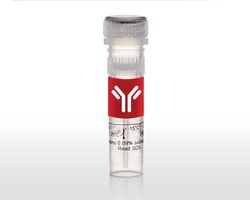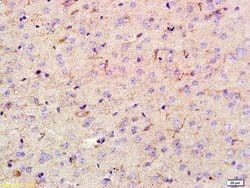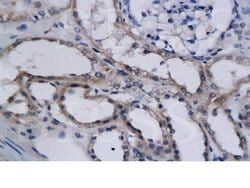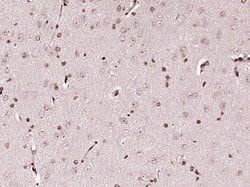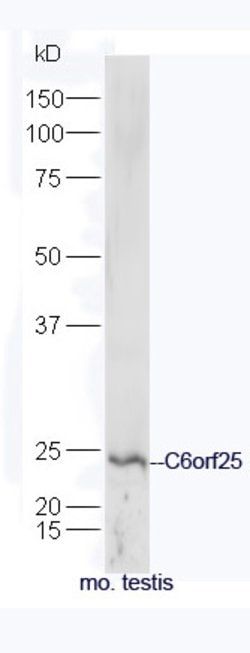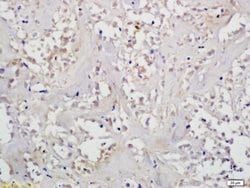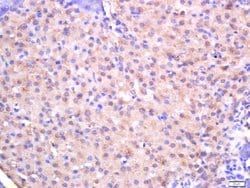H-1 beta Rabbit anti-Human, Polyclonal, Bioss
Manufacturer: Bioss
Select a Size
| Pack Size | SKU | Availability | Price |
|---|---|---|---|
| Each of 1 | 50-198-3190-Each-of-1 | In Stock | ₹ 36,897.75 |
50-198-3190 - Each of 1
In Stock
Quantity
1
Base Price: ₹ 36,897.75
GST (18%): ₹ 6,641.595
Total Price: ₹ 43,539.345
Antigen
H-1 beta
Classification
Polyclonal
Conjugate
Unconjugated
Gene
ARNT
Gene Alias
AHA-1; Arnt; ARNT protein; Arnt1; ARNT1a; ARNT1b; aryl hydrocarbon receptor nuclear translocater; Aryl hydrocarbon receptor nuclear translocator; Aryl hydrocarbon receptor nuclear translocator 1; aryl hydrocarbon receptor nuclear translocator type 1a; aryl hydrocarbon receptor nuclear translocator type 1b; BHLHE2; BOS_2904; Class E basic helix-loop-helix protein 2; D3Ertd557e; Dioxin receptor, nuclear translocator; Drnt; ESTM42; HIF1 beta; HIF-1 beta; Hif1b; HIF1BETA; HIF-1beta; HIF-1-beta; HIF1-beta; hypoxia-inducible factor 1 beta; hypoxia-inducible factor 1, beta subunit; Hypoxia-inducible factor 1-beta; mKIAA4051; TANGO; W08714; zgc:136664
Host Species
Rabbit
Purification Method
Protein A
Regulatory Status
RUO
Gene ID (Entrez)
405
Content And Storage
-20°C
Form
Liquid
Applications
Immunofluorescence, Immunohistochemistry (Paraffin), Western Blot
Concentration
1 μg/mL
Formulation
PBS with 1% BSA, 50% glycerol and 0.09% sodium azide; pH
Gene Accession No.
P27540
Gene Symbols
ARNT
Immunogen
KLH conjugated synthetic peptide derived from human HIF-1 Beta .
Quantity
100 μL
Primary or Secondary
Primary
Target Species
Human
Product Type
Antibody
Isotype
IgG
Description
- HIF-1 beta is a series of aryl hydrocarbon receptor nuclear translocator (ARNT) gene products
- Hypoxia contributes significantly to the pathophysiology of major categories of human disease, including myocardial and cerebral ischemia, cancer, pulmonary hypertension, congenital heart disease and chronic obstructive pulmonary disease
- Hypoxia contributes significantly to the pathophysiology of major categories of human disease, including myocardial and cerebral ischemia, cancer, pulmonary hypertension, congenital heart disease and chronic obstructive pulmonary disease
- HIF-1 is a nuclear protein involved in mammalian oxygen homeostasis
- This occurs as a posttranslational modification by prolyl hydroxylation
- HIF-1 is a heterodimer composed of HIF-1 alpha and HIF-1 beta subunits
- Both subunits are constantly translated
- However, under normoxic conditions, human HIF-1 alpha is hydroxylated at Pro402 or Pro564 by a set of HIF prolyl hydroxylases, is polyubiquinated, and eventually degraded in proteosomes
- Under hypoxic conditions, the lack of hydroxylation prevents HIF degradation and increases transcriptional activity
- Therefore, the concentration of HIF-1 alpha increases in the cell
- In contrast, HIF-1 beta remains stable under either condition
- HIF-1 beta is a series of aryl hydrocarbon receptor nuclear translocator (ARNT) gene products
- Diseases associated with HIF-1 beta dysfunction include hypoxia and renal cell carcinoma.HIF-1 beta is a series of aryl hydrocarbon receptor nuclear translocator (ARNT) gene products
- Hypoxia contributes significantly to the pathophysiology of major categories of human disease, including myocardial and cerebral ischemia, cancer, pulmonary hypertension, congenital heart disease and chronic obstructive pulmonary disease
- Hypoxia contributes significantly to the pathophysiology of major categories of human disease, including myocardial and cerebral ischemia, cancer, pulmonary hypertension, congenital heart disease and chronic obstructive pulmonary disease
- HIF-1 is a nuclear protein involved in mammalian oxygen homeostasis
- This occurs as a posttranslational modification by prolyl hydroxylation
- HIF-1 is a heterodimer composed of HIF-1 alpha and HIF-1 beta subunits
- Both subunits are constantly translated
- However, under normoxic conditions, human HIF-1 alpha is hydroxylated at Pro402 or Pro564 by a set of HIF prolyl hydroxylases, is polyubiquinated, and eventually degraded in proteosomes
- Under hypoxic conditions, the lack of hydroxylation prevents HIF degradation and increases transcriptional activity
- Therefore, the concentration of HIF-1 alpha increases in the cell
- In contrast, HIF-1 beta remains stable under either condition
- HIF-1 beta is a series of aryl hydrocarbon receptor nuclear translocator (ARNT) gene products
- Diseases associated with HIF-1 beta dysfunction include hypoxia and renal cell carcinoma.
